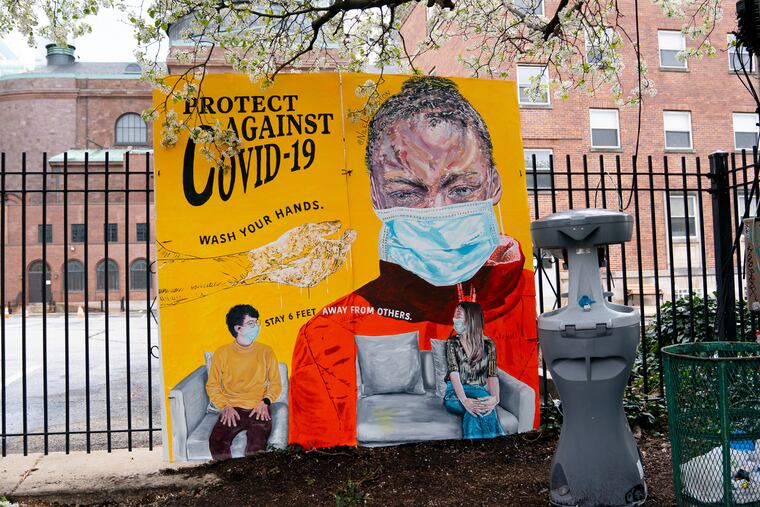The coronavirus meteor has hit Philly’s arts community | Opinion
Look out across the empty museums, galleries, stages, libraries, and cultural venues, and you see a city none of us recognize.

Over the past week, the entire city of Philadelphia has come to a halt to flatten the curve and brace ourselves for the devastating impacts of COVID-19.
Though unprecedented and shocking to comprehend, the stay-at-home shutdowns are essential measures. These official state and local orders are life saving, meant to keep our medical workers and others on the front lines of the pandemic safe. These actions remind us that we all have a stake in the collective care of our people and our city.
As we come to terms with the postponement of many rituals of our daily lives, and take immediate steps to care for the infected and vulnerable among us, our communities cannot afford to wait until the pandemic ends to begin our recovery efforts — including for the arts.
Look out across the empty museums, galleries, stages, libraries, and cultural venues, and you see a city none of us recognize.
These places are the lifeblood of our city, sites where we knit our social fabric together. Philly’s arts communities help us understand who we are, how we connect with one another, and how democracy expresses itself here.
If this was merely a work shutdown, not a public health pandemic, our museums and cultural venues would be jam packed. (Last weekend, visitors still lined up, with extra space between them, to pose with the Rocky statue.)
Art is not merely a luxury or decoration. Throughout the city, tens of thousands of young people engage with art education programs. Others who are housing insecure or in recovery find day-work and pathways to wellness through the arts. Our artists and organizations build connections and confront divisions across the fields of public health, criminal justice reform, and fair housing.
The Social Impact of the Arts Project documents how our cultural ecosystem fosters life-sustaining connections between people. When we meet our greatest challenges as a society, especially those rooted in inequity and injustice, we turn to art for guidance and survival. Humanity requires art.
Within just days of the shutdowns, the pandemic hit the arts sector like a meteor. Even if closures and cancellations end after several more weeks (though they are likely to extend much longer), the impact has rapidly resulted in the loss of countless jobs, lost livelihoods, and uncertain futures.
With a $4.1 billion annual economic impact across Greater Philadelphia, arts and culture institutions employ tens of thousands of full-time and contract workers. Alongside other industries, local arts leaders and artists are sharing horrific stories of immediate layoffs, slashed services, and closed projects years in the making.
According to a recent report from the National Endowment for the Arts, many artists have epitomized the gig economy. Like other contract and seasonal workers, it’s not fully clear how they will be protected by the proposed stimulus.
Despite cuts and uncertainty, many artists have already pivoted into civic duty. Others are prompting fundraising campaigns for performers, writers, and cultural workers, mapping mutual-aid networks across neighborhoods, and proposing policy responses.
We are now in urgent need of a concerted response that accounts for the vulnerabilities coronavirus has exposed in our arts community, and a plan to rebuild and strengthen a more resilient system.
In a best-case scenario, our elected officials and those with greater resources would also respond to their fullest capacities, knowing the true value of the arts to connect us to one another and the world around us.
The City could be a central clearinghouse, through the Office of Arts, Culture, and the Creative Economy, in tandem with local cultural leaders, to mobilize major programs to address crucial relief efforts.
Our regional philanthropic community, including private and corporate foundations, could sign on to a “no business as usual” pledge to loosen restrictions on project grants for general operating expenses, a critical tool arts organizations rely on for survival. They also could respond with significant emergency funds for artists and organizations.
» READ MORE: Love in the time of corona: A wedding engaging the Mütter Museum family, full of warmth from a social distance
As residents, we can immediately pursue community-based forms of support. Even in a time of social distance, virtual engagement is essential, as many in-person fundraisers that cover annual expenses will move online in the coming months.
Personal outreach to our beloved institutions and individual artists — with time, ideas, and dollars — is vital if our community is to survive and rebound.
As it did for so many institutions, COVID-19 revealed the underlying economic fragility of our arts communities before the pandemic. Now, as a city, we face a future in which we will desperately need art and culture to revive our consciousness and connectedness.
Recovery cannot wait.
Paul M. Farber is Artistic Director and Co-Founder of Monument Lab and Senior Research Scholar at the Center for Public Art and Space at the University of Pennsylvania Weitzman School of Design. He is the author of A Wall of Our Own: An American History of the Berlin Wall and co-editor of Monument Lab: Creative Speculations for Philadelphia.